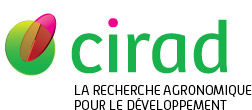Justes Eric, Alletto Lionel, Bedoussac Laurent, Bonnet C., Couëdel Antoine, Gavaland André, Journet Etienne-Pascal, Plaza-Bonilla Daniel, Rafaillac Didier, Viguier Loïc.
2018. Towards Agroecological Cropping Systems: the Role of Diversification in Time and Space for Supporting the Crop Production.
In : Book of abstracts of the XV European Society for Agronomy Congress : "Innovative cropping and farming systems for high quality food production systems". Agroscope
|
Version publiée
- Anglais
Accès réservé aux agents Cirad Utilisation soumise à autorisation de l'auteur ou du Cirad. 2018_JustesE_ESA.pdf Télécharger (486kB) | Demander une copie |
Note générale : Eric Justes est l'expert invité du Cirad
Résumé : The optimization of cash crop successions and rotations is crucial for designing efficient cropping systems providing supporting ecosystem services instead of using external chemical inputs. The reintroduction of legumes is a relevant means for increasing the nitrogen resources. The interests of legumes are well known, however, they have also some weaknesses that strongly limit their adoption by farmers. One way to avoid these difficulties is to choose species and cultivars tolerant to pests and diseases and adapted to the pedoclimatic conditions. Nevertheless, when they are grown as sole crop their agronomic performance is often insufficient to obtain profitable and stable yields. Another solution is to grown legumes in intercrops with non-legume companion crops, such as cereals, in order to mitigate their poor performance. The evaluation of low input and agroecological cropping systems was carried out at INRA in the experimental station of Toulouse-Auzeville (South-West France) where 6 prototypes were compared since 2003 in 2 successive periods of 6 years. Three prototypes corresponding to 0 (control rotation: sorghum, sunflower, durum wheat), 1 (sunflower, winter pea, durum wheat) or 2 (soybean, spring pea, durum wheat) grains legumes in the 3-year rotation were compared. The same 3 rotations including multi-service cover crops (white mustard, oat/vetch, vetch or lucerne) during the fallow period between two main cash crops were also tested. Afterward a second period aiming at strongly reducing the use pesticides was carried out by redesigning 2 novel rotations based on a diversification of cultivars and species mixtures versus the control cereal-based rotation.
Mots-clés libres : Species diversification, Grain legumes, Cover crops, Intercropping, Crop rotation, Ecosystem services
Auteurs et affiliations
-
Justes Eric, CIRAD-PERSYST-UMR SYSTEM (FRA)
 ORCID: 0000-0001-7390-7058
ORCID: 0000-0001-7390-7058
- Alletto Lionel, Université de Toulouse (FRA)
- Bedoussac Laurent, Université de Toulouse (FRA)
- Bonnet C., INRA (FRA)
- Couëdel Antoine, Université de Toulouse (FRA)
- Gavaland André, INRA (FRA)
- Journet Etienne-Pascal, INRA (FRA)
- Plaza-Bonilla Daniel, EEAD (ESP)
- Rafaillac Didier
- Viguier Loïc, Université de Toulouse (FRA)
Source : Cirad-Agritrop (https://agritrop.cirad.fr/589782/)
[ Page générée et mise en cache le 2021-09-21 ]




